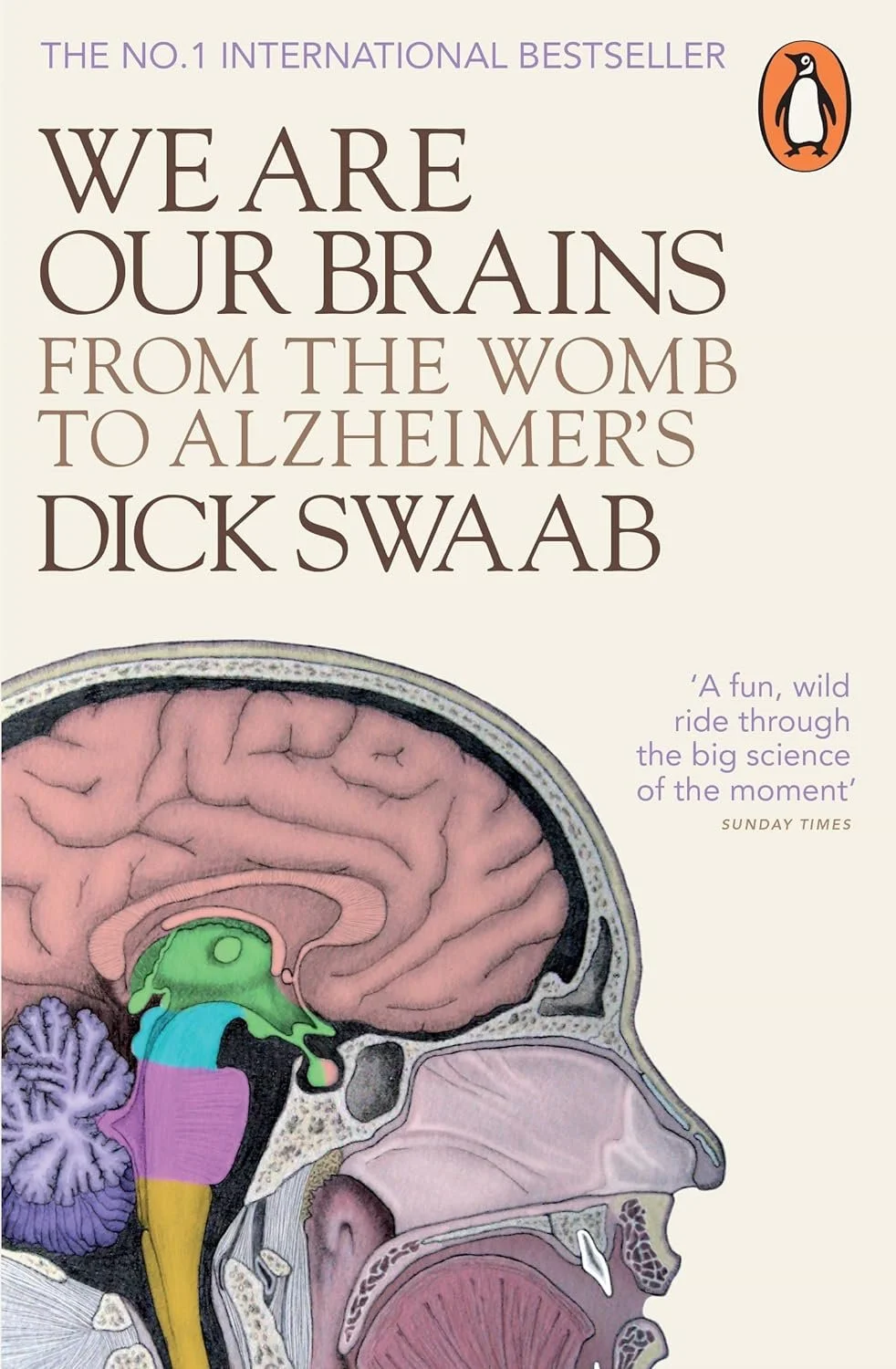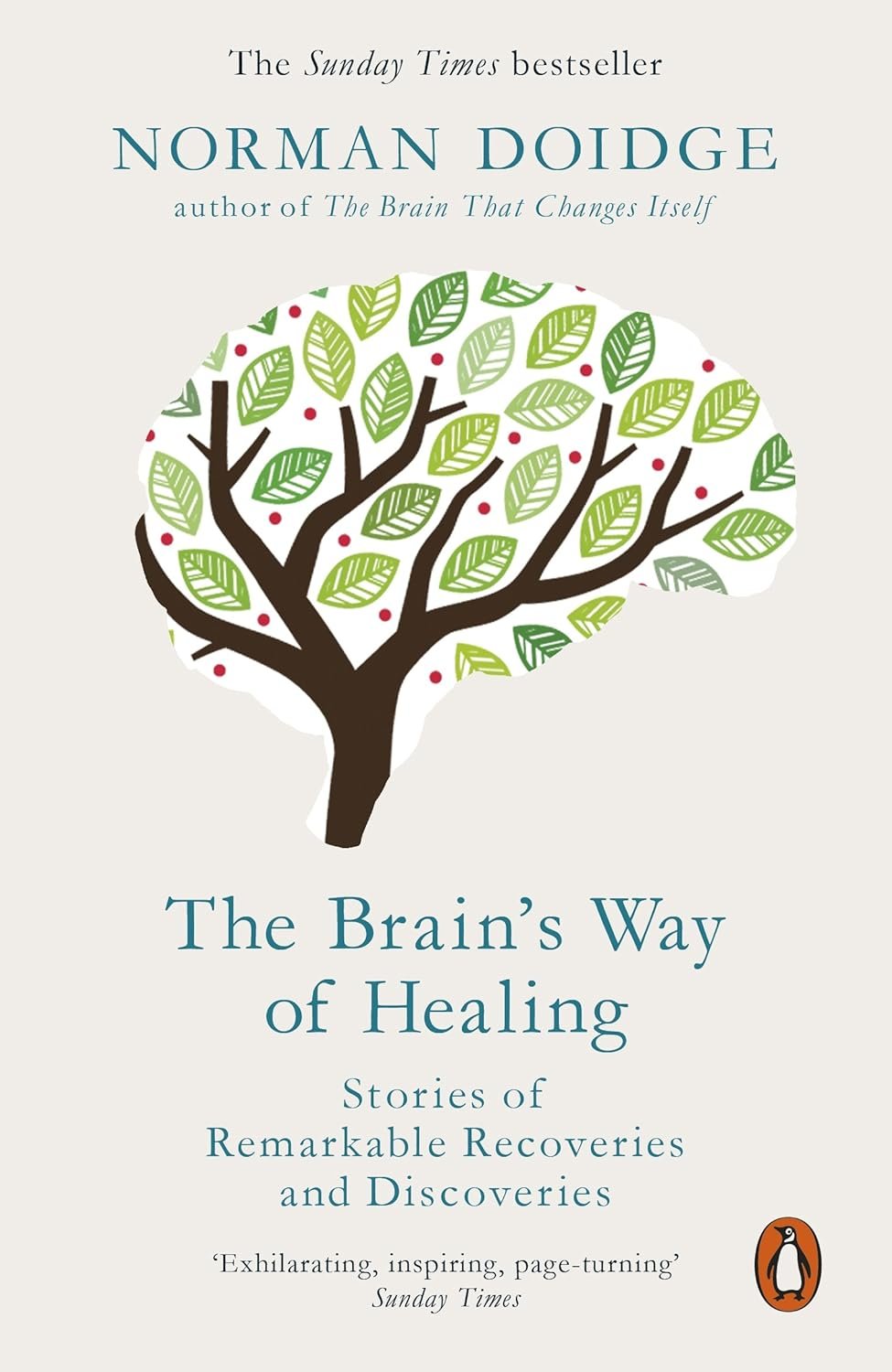Books on the Brain
Series: Recommended Psychology Books
Want to know more about the brain? Many Psychology students take a course on neuroscience and cover topics about brain plasticity, or learn about rare and unusual cases of brain damage and simply want to know more! Well, below you will find 6 books all on the brain that will leave far more aware of what’s going on inside your skull.
Some of the links in this article are Amazon affiliate links. As an Amazon Associate, I earn from qualifying purchases. By using the affiliate links I earn a small fee from your purchase, but it does not cost you anything extra to use them. They help me to be able to create more content for you. Thank you for the support!
1. Seven and a Half Lessons About the Brain (Lisa Feldman Barrett)
Seven and a Half Lessons About the Brain is a book written by Lisa Feldman Barrett, a neuroscientist. The book is a collection of seven and a half short lessons that aim to challenge common misconceptions about the brain and provide readers with a deeper understanding of how the brain works. Here’s a quote from each chapter to give you a flavour:
Half-Lesson: Your Brain is Not for Thinking:
She writes: “Of course, your brain does think and feel and imagine and create hundreds of other experiences, such as letting you read and understand this book. But all of these mental capacities are consequences of a central mission to keep you alive and well by managing your body budget. Everything your brain creates, from memories to hallucinations, from ecstasy to shame, is part of this mission.”
Lesson 1: You Have One Brain (Not Three)
She writes: “According to this evolutionary story, the human brain ended up with three layers — one for surviving, one for feeling, and one for thinking — an arrangement known as the triune brain…The triune brain idea is one of the most successful and widespread errors in all of science.”
Lesson 2: Your Brain is a Network
She writes: “What kind of brain gives us our ability to cooperate, our capacity for language, and our talent to guess what other people are thinking or feeling? What kind of a brain is necessary to create a human mind? The answer to these questions begins with an important insight. Your brain is a network”
Lesson 3: Little Brains Wire Themselves to Their World
She writes: “A baby’s wiring instructions come not only from the physical environment but also from the social environment, from caregivers and people like you and me. When you cradle a newborn girl in your arms, you present your face to her at just the right distance to teach her brain to process and recognize faces. When you expose her to boxes and buildings, you’re training her visual system to see edges and corners.”
Lesson 4: Your Brain Predicts (Almost) Everything You Do
She writes: “Your past experiences include not only what happened in the world around you but also what happened inside your body. Was your heart beating quickly? Were you breathing heavily? Your brain asks itself in every moment, figuratively speaking, The last time I encountered a similar situation, when my body was in a similar state, what did I do next?”
Lesson 5: Your Brain Secretly Works with Other Brains
She writes: “How do the people around you influence your body budget and rewire your adult brain? Remember that your brain changes its own wiring after new experiences, a process called plasticity…Little by little, your brain becomes tuned and pruned as you interact with others.”
Lesson 6: Brains Make More than One Kind of Mind
She writes: “When people from the island of Bali in Indonesia are afraid, they fall asleep…If you’re from a Western culture, you’re supposed to freeze on the spot, widen your eyes, and gasp. You can also squeeze your eyes shut and scream, like a teenage babysitter in a bad horror movie. Or you can run away from whatever is scaring you. These behaviors are Western stereotypes for proper fear behavior. In Bali, the stereotype is to fall asleep.”
Lesson 7: Our Brains Can Create Reality
She writes: “You actively and willingly participate in this made-up world every day. It is real to you. It’s as real as your own name, which, by the way, was also made up by people. We all live in a world of social reality that exists only inside our human brains.”
There’s lots in this book to make you think, but as with every book, be a critical reader; challenge the ideas presented to you and think through the implications of what she writes.
This is a relatively short book of 192 pages that packs in lots of big ideas that will intrigue, fascinate and push your understanding about the brain.
Buy here: Amazon
2. How Emotions Are Made (Lisa Feldman Barrett)
"How Emotions Are Made" is a book written by Lisa Feldman Barrett, a psychologist and neuroscientist. The book challenges the general idea that emotions are universal and fixed experiences. Instead, Barrett proposes a theory called the "constructive theory of emotion," which suggests that emotions are not pre-wired or hardwired in the brain but are rather constructed by the brain based on individual experiences and cultural context.
The book delves into the neuroscience of emotions, exploring how the brain's predictions and interpretations shape our emotional responses. It emphasizes that emotions are not discrete categories with distinct neural signatures but are rather a product of the brain's continuous process of making meaning from sensory input. Barrett also discusses the role of concepts, language, and cultural influences in shaping our emotional experiences.
In summary, "How Emotions Are Made" challenges traditional views on emotions, presenting a perspective that emphasizes the dynamic and constructed nature of emotional experiences, shaped by individual and cultural contexts.
Buy here: Amazon
3. We are Our Brains: From Womb to Alzheimer’s (Dick Swaab)
"We Are Our Brains: From Womb to Alzheimer's" is a book by neuroscientist Dick Swaab that explores the development and functions of the human brain across the lifespan. Swaab covers various aspects of neuroscience, from prenatal brain development to aging and neurodegenerative conditions like Alzheimer's disease.
The book delves into the intricate ways in which the brain shapes our thoughts, emotions, and behaviors, examining the impact of genetics, environment, and experiences on brain structure and function. Swaab discusses topics such as consciousness, memory, and the role of hormones in influencing our mental states. Furthermore, Swaab addresses neurological disorders and conditions, shedding light on the biological underpinnings of conditions like autism, schizophrenia, and Alzheimer's disease.
By providing insights into the complexity of the brain, the book offers readers a comprehensive understanding of the brain that makes you consider how much of a role it has on our behaviour and development.
Buy here: Amazon
4. Am I Just My Brain? (Sharon Dirckx)
"Am I Just My Brain" is a book by Brain Scientist Sharon Dirckx, and offers a counter argument and balance to the three previous books on the list.
Modern research is uncovering more and more detail of what our brain is and how it works. We are living, thinking creatures who carry around with us an amazing organic supercomputer in our heads.
But what is the relationship between our brains and our minds-and ultimately our sense of identity as a person? Are we more than machines? Is free-will an illusion? Do we have a soul?
Brain scientist Sharon Dirckx lays out the current understanding of who we are from biologists, philosophers, theologians and psychologists, and points towards a bigger picture, that suggests answers to the fundamental questions of our existence. Not just ""What am I?"", but ""Who am I?""-and ""Why am I?""
Read this book to gain valuable insight into what modern research is telling us about ourselves, or to give a sceptical friend to challenge the idea that we are merely material beings living in a material world. [from the books own description]
Buy here: Amazon
5. The Brain’s Way of Healing: Stories of Remarkable Recoveries and Discoveries (Norman Doidge)
"The Brain’s Way of Healing" is a book by Norman Doidge. It explores the amazing ways that the brain can recover following damage whether that’s from injury or disease.
Advances in technology enabled neuroscientists to learn more about the brain’s ability to change and adapt following experiences; a phenomenon known as neuroplasticity. Norman Doidge writes about acases where brain damage has been reversed, including people who have suffered from strokes, Parkinson’s disease, brain injuries, autism and learning disorders.
One example from the book involves the use of neurofeedback to treat chronic pain. Doidge discusses the case of a woman named Cheryl, who suffered from severe chronic pain after a car accident. Traditional medical treatments had not provided relief, so Cheryl sought the help of a biofeedback specialist who used neurofeedback, a technique that involves monitoring brainwave activity and providing real-time feedback to the individual.
Cheryl learned to control her brainwave patterns, and remarkably, her chronic pain began to diminish. The training helped her rewire her brain's responses to pain, illustrating the power of neuroplasticity in influencing the brain's healing process.
A great read for all students studying Psychology and want to delve deeper into the area of brain plasticity, and also a hopeful and inspiring read for all of us about the brain’s ability to heal following damage.
Buy here: Amazon
6. The Man Who Mistook His Wife for a Hat (Oliver Sacks)
"The Man Who Mistook His Wife for a Hat" is a collection of case studies about individuals with neurological disorders.
This is a classic and a must read for all psychology students. The work of Oliver Sacks was truly groundbreaking and his case studies will leave you moved and awe struck. He presents these cases in a compassionate and engaging way, highlighting the complex and often puzzling nature of the human brain.
The book covers a range of disorders, from cases of memory loss and dementia to rare conditions such as Tourette's syndrome and synesthesia. Sacks uses each case to explore the way in which the brain processes information and creates our sense of self, as well as the ways in which neurological disorders can disrupt these processes.
Sacks' compassionate and insightful approach makes the book accessible to readers of all backgrounds, and encourages us to see the individuals behind the diagnoses. A great introdiction to the inner workings of the mind, and the biological processes that may be involved.
Buy here: Amazon






